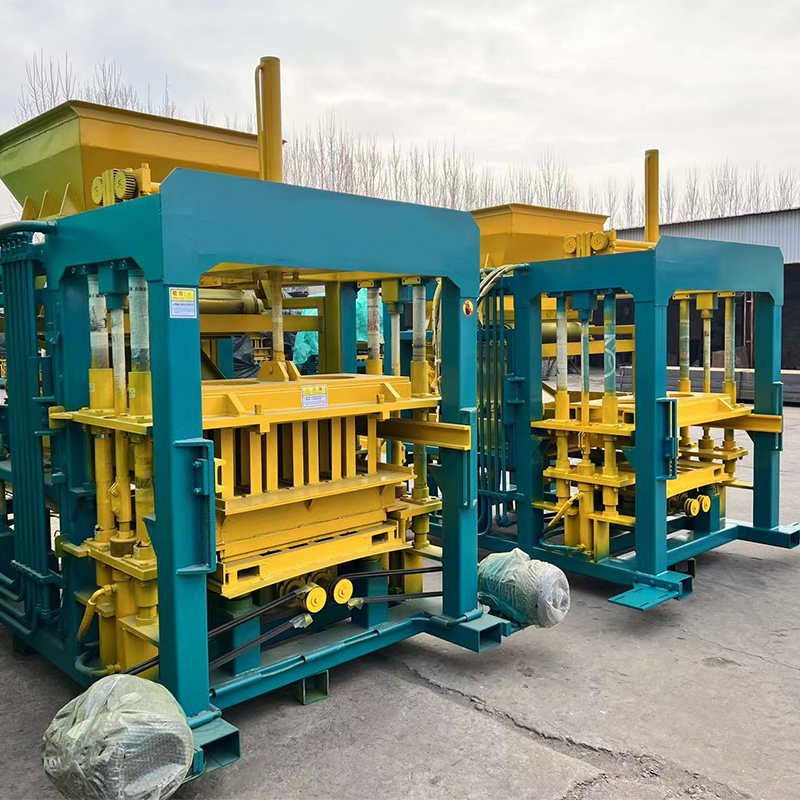
The construction industry stands as a testament to human ingenuity, creating structures that shape our civilizations.
Behind every magnificent building, there is an intricate process that starts with raw materials and culminates in a masterpiece of design and engineering.
Central to this process is the modern block making machine, a technological marvel that has redefined the way we transform raw materials into functional and aesthetic building components.
This essay embarks on a journey to uncover the inner workings of these remarkable machines, exploring the stages of their operation, the technologies that drive them, and the profound impact they have on modern construction.
The Evolution of Block Making Machines: A Historical Overview
Before delving into the intricacies of modern block making machines, it is essential to trace their evolution.
The history of block making dates back centuries, with early civilizations employing rudimentary techniques to shape and assemble blocks for construction.
From manually crafting individual blocks to the industrial revolution’s mechanization, the journey of block making has been one of continuous innovation.
The introduction of hydraulic and pneumatic technologies in the 19th century marked a significant milestone, enabling the production of uniform and durable blocks on a larger scale.
As the world moved into the 20th century, advancements in automation, computerization, and materials science paved the way for the sophisticated block making machines of today.
These machines stand as a testament to the relentless pursuit of efficiency, precision, and sustainability in construction.
The Core Mechanisms: Transforming Raw Materials
Material Preparation: The journey from raw materials to a finished block begins with meticulous material preparation.
Various aggregates, including sand, gravel, and crushed stone, are combined with cement and water to create a homogenous mixture.
Modern block making machines integrate precision measuring systems that ensure accurate material ratios, laying the foundation for consistent block quality.
Mixing and Compaction: Once the materials are prepared, they are fed into a mixing chamber where they are thoroughly blended.
This mixture is then introduced into a mold or chamber, where hydraulic or pneumatic systems apply controlled pressure to compact the material.
The compaction process ensures the elimination of voids and air pockets, resulting in densely packed blocks with enhanced structural integrity.
Technological Innovations: Precision and Automation
Computerized Control Systems: Central to the inner workings of modern block making machines are advanced computerized control systems.
These systems oversee every aspect of the block production process, from material measurement and mixing to compaction and curing.
Through real-time monitoring and adjustment, these systems ensure consistent block quality, optimize energy consumption, and minimize waste.
Mold and Die Advancements: The design of molds and dies has undergone a revolution, driven by computer-aided design (CAD) and computer-aided manufacturing (CAM) technologies.
These advancements allow for the creation of intricate and customized block shapes, sizes, and textures. From interlocking blocks to specialized surface finishes, the modern block making machine enables architects and builders to unleash their creativity.
Energy-Efficient Curing: Curing is a critical stage in block production that ensures the blocks achieve their desired strength and durability.
Modern block making machines incorporate energy-efficient curing methods, such as steam or high-frequency vibration, which accelerate the curing process while minimizing energy consumption.
This not only enhances efficiency but also contributes to sustainable manufacturing practices.
Environmental and Economic Implications
The integration of advanced technologies and energy-efficient processes in modern block making machines has a direct impact on environmental sustainability.
By optimizing material usage, reducing waste, and minimizing energy consumption, these machines contribute to a reduced carbon footprint, aligning with global efforts to combat climate change.
The precise material measurements and compaction techniques employed by modern block making machines result in minimal material wastage.
This efficiency is crucial in a world where responsible resource management is paramount, as it reduces the demand for raw materials and minimizes the strain on natural ecosystems.
Cost-Effective Construction: Beyond their environmental benefits, modern block making machines offer economic advantages.
The automation of processes reduces labor costs, accelerates project timelines, and enhances overall construction efficiency.
Additionally, the durability of blocks produced by these machines translates into long-term cost savings through reduced maintenance and replacements.
Challenges and Future Directions
Technological Adaptation: While modern block making machines offer unparalleled benefits, their successful adoption requires a workforce with the necessary technical expertise.
Training construction professionals to operate and maintain these machines is essential to maximize their potential.
Infrastructure and Accessibility: The widespread adoption of modern block making machines faces challenges in regions with limited infrastructure and access to advanced technology.
Bridging this gap requires collaborative efforts between governments, industries, and organizations to ensure equitable access to sustainable construction solutions.
In conclusion, the inner workings of the modern block making machine showcase the culmination of centuries of innovation, merging advanced technologies with the artistry of construction.
From raw materials to masterpieces of design and engineering, these machines have redefined the construction landscape by offering precision, efficiency, and sustainability.
Through computerized control systems, innovative molding techniques, and energy-efficient curing processes, modern block making machines embody the spirit of progress that drives the construction industry forward.
As we stand at the threshold of a new era in construction, these machines are pioneering a future where creativity knows no bounds and sustainable building practices are the cornerstone of progress.
